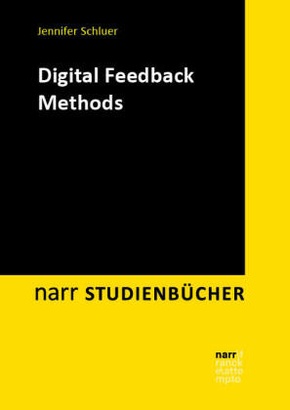
Digital Feedback Methods
| Verlag | Narr |
| Auflage | 2022 |
| Seiten | 298 |
| Format | 17,1 x 1,8 x 24,2 cm |
| Großformatiges Paperback. Klappenbroschur | |
| Gewicht | 576 g |
| Artikeltyp | Englisches Buch |
| Reihe | narr STUDIENBÜCHER |
| ISBN-10 | 3823385321 |
| EAN | 9783823385325 |
| Bestell-Nr | 82338532A |
Welche Möglichkeiten gibt es, Lernprozesse durch digitales Feedback zu unterstützen? Dieses Buch bietet Lehrenden und Studierenden ein wissenschaftlich fundiertes Orientierungs- und Anwendungswissen zu digitalen Feedbackmethoden. Diese können nicht nur im Online- oder Hybridunterricht eingesetzt werden, sondern auch den Präsenzunterricht bereichern. Die Vorzüge und Grenzen der jeweiligen digitalen Feedbackmethoden werden diskutiert und Umsetzungsempfehlungen abgeleitet. Es werden dabei sowohl synchrone als auch asynchrone Methoden sowie ihr synergetisches Zusammenspiel betrachtet.
How can feedback be exchanged in the digital age? This book equips teachers and learners with a research-based overview of digital feedback methods. It discusses the advantages and limitations of each digital feedback method and offers suggestions for their practical application in the classroom. They can be utilized in online teaching as well as to enrich on-site teaching. The book also provides ideas for combining different feedback methods synergistically and closes with recommendations for developing dynamic digital feedback literacies among teachers and students.
The crucial role of feedback in the learning process is undisputed. But how can feedback be exchanged in the digital age? This book equips teachers and learners with a research-based overview of digital feedback methods. This includes, for instance, feedback in text editors, cloud documents, chats, forums, wikis, surveys, mails as well as multimodal feedback in video conferences and recorded audio, video and screencast feedback. The book discusses the advantages and limitations of each digital feedback method and offers suggestions for their practical application in the classroom. They can be utilized in online teaching as well as to enrich on-site teaching. The book also provides ideas for combining different feedback methods synergistically and closes with recommendations for developing dynamic digital feedback literacies among teachers and students.
Inhaltsverzeichnis:
1. Introduction2. Theoretical frameworks and foundations 3. Digital feedback methods4. Discussion and outlook5. References

